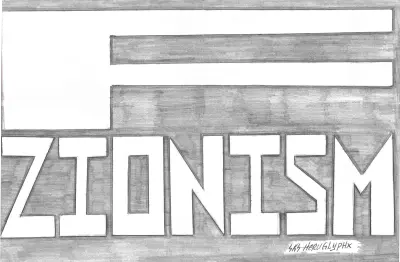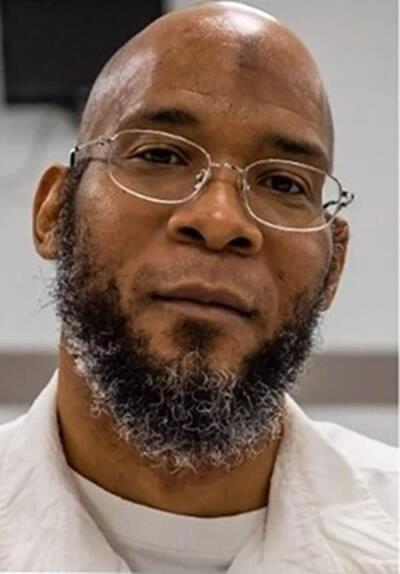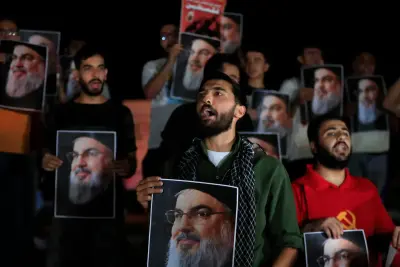
Christian Zionism Tablet Propaganda Help Keep Support for Palestine Small

i enjoyed comrade Grim’s article on Christian Zionism and the prison tablet propaganda. i wanted to comment a little since Grim asked for comments from TX comrades.
Comrade Grim was spot on with what was said about the ideas and ideals driving Christian Zionism generally and as it manifests itself in the prison tablet space.
Regarding the group Grim mentioned by name, Real Vida TV, i was able to work closely with Real Vida while organizing on behalf of Texas T.E.A.M. O.N.E. At the time their line on solitary confinement was that they saw it as torture and that it should be shut down in its totality. This matched Our own line on solitary confinement and Real Vida was willing and did assist us in spreading Our message, connecting us with interested groups and opening their platform up to us and our supporters. At the time it was only an audio radio show, not a podcast, and there were no tablets. They also acted as communication assistants helping us make important contacts with each other from plantation to plantation as we organized a state-wide hunger strike against solitary confinement. All this is to say that at the time we had a working relationship, regardless of their Christian Zionist beliefs.
However, this changed after Operation Al-Aqsa flood. Personally speaking i couldn’t even listen to the garbage they were spewing let alone look past it. Ties were severed. To me the question of the Third World proletariat and the Palestinian nationalist struggle far out-weighs the U.$. prisoner class-based struggles.
They’re the most reactionary manifestation of the christian prison ministries and also one of the most popular. A lot of their videos are widely discussed afterwards and i’ve had more than a few disputes and even fisticuffs surrounding the B.S. they spew. The cold truth is that as MIM(Prisons) says, not all prisoners are swayed by this garbage. But the Palestinian struggle has unearthed the reactionary, patriotic amerikkkan spirit among the lumpen here. What i observe is that only the most politically and socially conscious prisoners side with the Palestinian struggle, and this is the minority.
The tablets play a role in that they have very limited selection of voices and ideas, particularly on this sort of issue. Pando App dominates the landscape and prior to March 2024, when podcasts were uploaded onto all tablets, Pando was basically the only source of entertainment. i have filed complaints concerning discrimination in content that is available on the KA Lite app, which is an education app that has a wide variety of scientific and hard historical factual knowledge, but the prison admin has to allow permission to download content. My complaint came after observing that there was no content concerning Africa, the Black Liberation struggle, and anti-colonial revolutions. Although these videos have been made by the app creator, the Texas Department of Criminal Justice (TDCJ) has not allowed us access to the content. i also filed a complaint on the podcast platform for similar reasons but pertaining solely to Palestine.
The final comment is that outside comrades have to begin to get their content on the music and/or podcast platforms. i sent a previous note to MIM(Prisons) on how to do that with the Securus people.
Firewater of USW also responded: Grim, read your article in ULK 86. I totally agree with you about the Christian religion and these “evangelists” supporting mass murder and exploitation around the world. The people at Real Vida are real nice folks, but they are brainwashed and misguided like all Christians. We need to be able to copy what they do only for our revolutionary work.
We need to be doing what Real Vida is doing but like you said the Christian Zionists have a monopoly on these tablets and it needs to be broken up! I was in medium and high security and all we could watch was “Pando App”, which is nothing but Christian Evangelists and we have an FYI App that is run by TDCJ and is all Jesus all the time!
TDCJ is run by these Christian Chapels and they oppress other religions such as Muslim, Native American, Eastern religions, etc. The Church of the Larger Fellowship (CLF) Unitarian Universalists’ Prison Ministry said that the “PANDO” App would not allow the CLF to participate. Probably because the PANDO folks are right-wing evangelical kooks and the CLF and UUA are extremely liberal organizations.
Grim is right on when ey talks about the genocide of Turtle Island and the raping and pillaging of Mother Earth’s treasures. They love to tout capitalism as the greatest engine of wealth ever created. But it’s like Orwell’s Animal Farm, where the farm animals are ruled by their newly formed governance of PIGS!
Related Articles:













